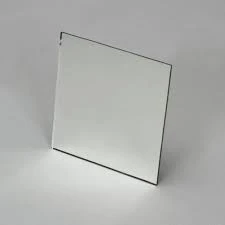

Exploring the World of Float Glass A Visual Journey
Float glass, a fundamental material in modern architecture and design, plays a crucial role in various applications, from windows to facades. The captivating process of creating float glass can be vividly captured in video format, offering viewers a clear understanding of its production and unique properties.
The float glass manufacturing process begins with the careful selection of raw materials. Silica sand, soda ash, and limestone are the primary components. Together, these materials undergo a rigorous purification process to ensure high quality. Observing this step in a video highlights the meticulousness involved in preparing the raw materials, emphasizing the importance of each component in achieving the desired glass properties.
Once the ingredients are ready, they are mixed and melted in a furnace at extremely high temperatures, typically around 1,600 degrees Celsius. In a well-produced video, this fiery transformation is visually stunning, showcasing the molten glass as it flows seamlessly across a molten tin surface. This is where the term float glass originates; the glass floats on tin, creating a perfectly flat and smooth surface. This unique method eliminates many inefficiencies associated with older glass-making techniques, such as blowing or pressing, resulting in a superior end product.
One of the most fascinating aspects captured in float glass videos is the cooling process. After the glass has floated on the tin bath, it must be gradually cooled in a controlled environment known as the lehr. Here, the video can illustrate the glass' transformation from a glowing liquid to a solid immune to warping. This slow cooling is crucial for maintaining the integrity of the glass, preventing internal stresses that could lead to breakage.

The clarity and quality of float glass make it a preferred choice for architectural applications. In addition to its aesthetic appeal, the video can also introduce viewers to various finishes and treatments that enhance float glass, such as low-emissivity coatings for energy efficiency or tinted options for privacy. By showcasing examples of modern structures that feature float glass prominently, audiences can appreciate its versatility and functionality in both residential and commercial settings.
Another significant aspect that video content can convey is the environmental considerations of float glass production. With an increasing emphasis on sustainability, many manufacturers are adopting practices that reduce energy consumption and recycle raw materials. Highlighting innovations in this area can be both educational and inspiring for viewers interested in sustainable building practices.
Finally, the video could conclude with insights into the future of float glass technology. From advancements in smart glass that can adjust to changing light conditions to the integration of float glass in renewable energy solutions, the possibilities are genuinely exciting.
In summary, a float glass video not only provides a visual spectacle but also educates viewers on the intricate and fascinating world of glass manufacturing. From its raw materials to the advanced technologies shaping its future, float glass is more than just a building material—it's a versatile component of modern life, deserving of the appreciation and understanding that a visual medium can convey.